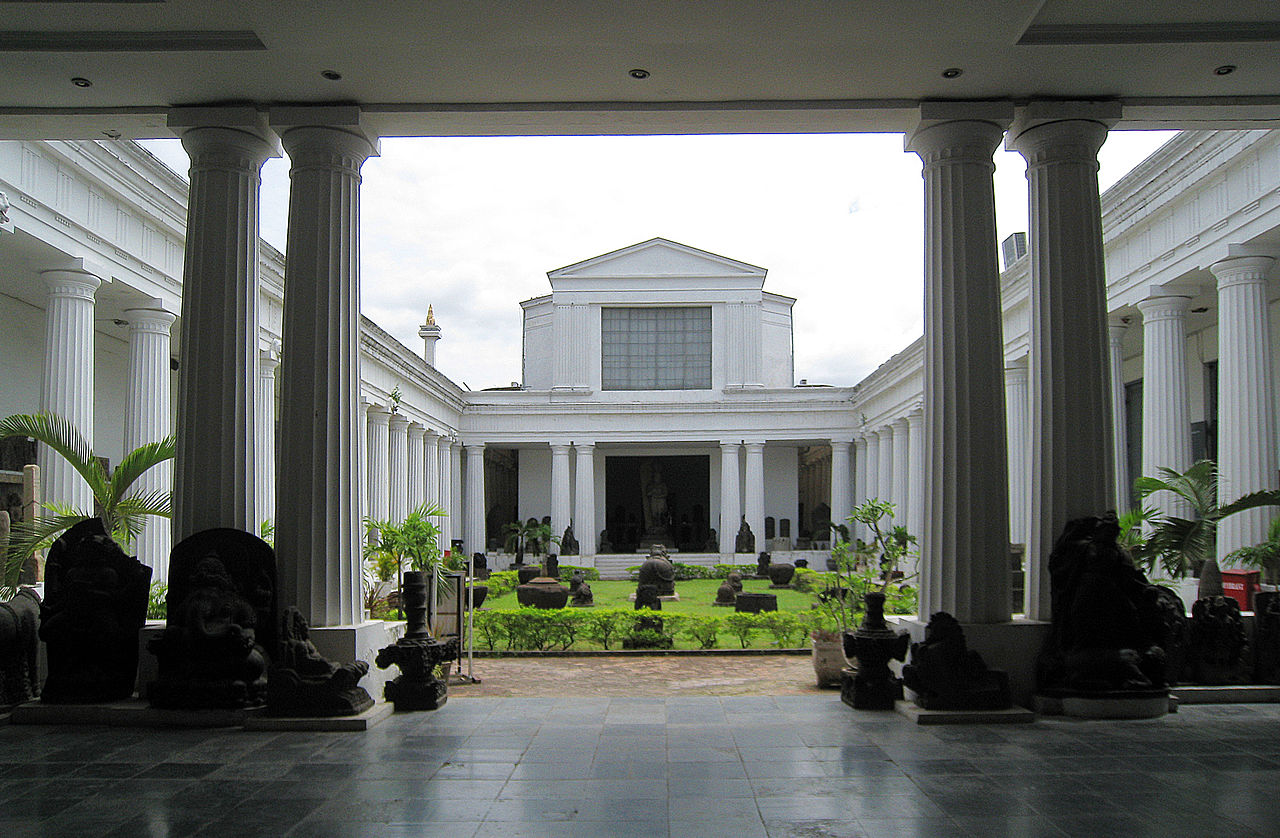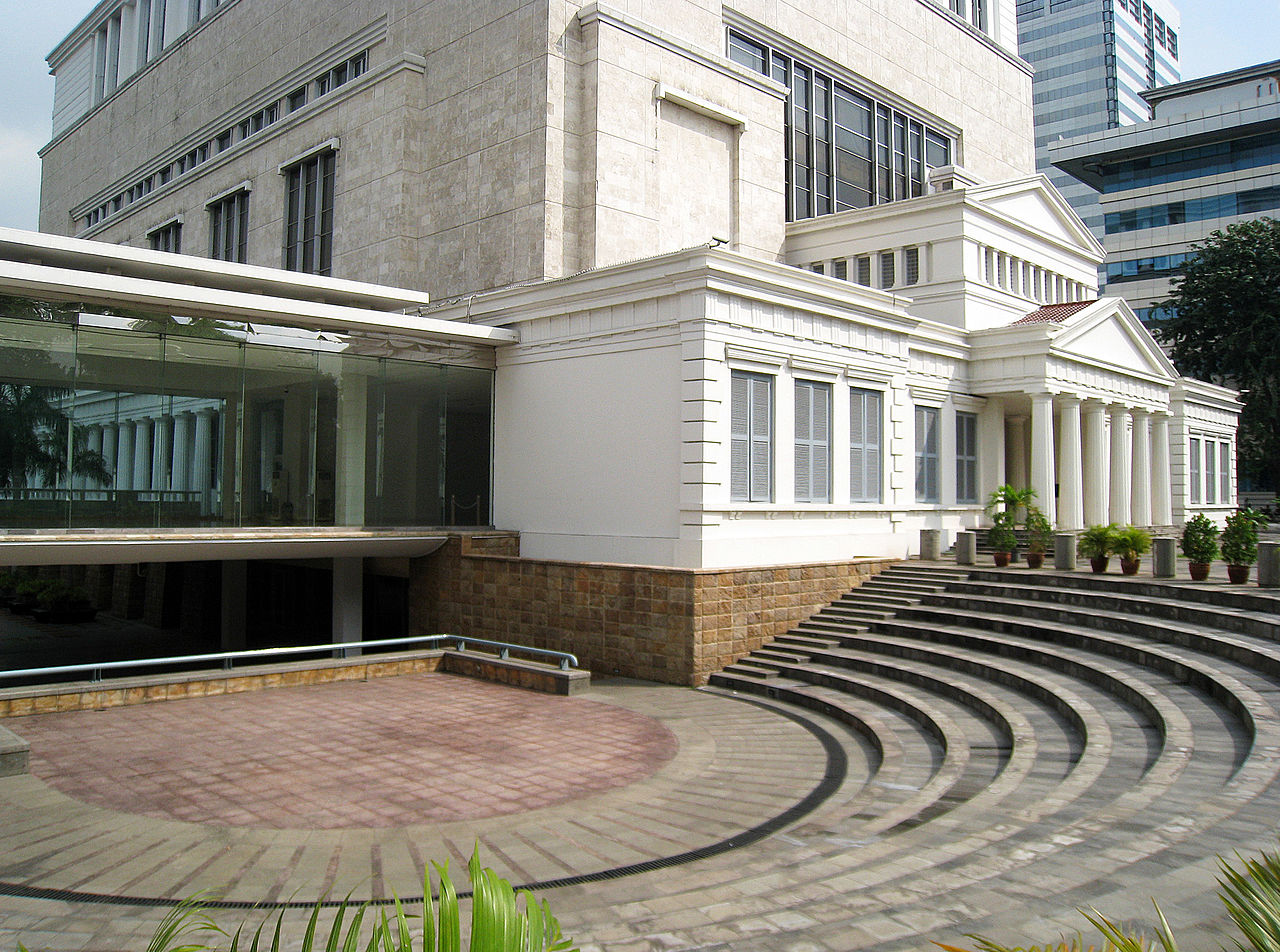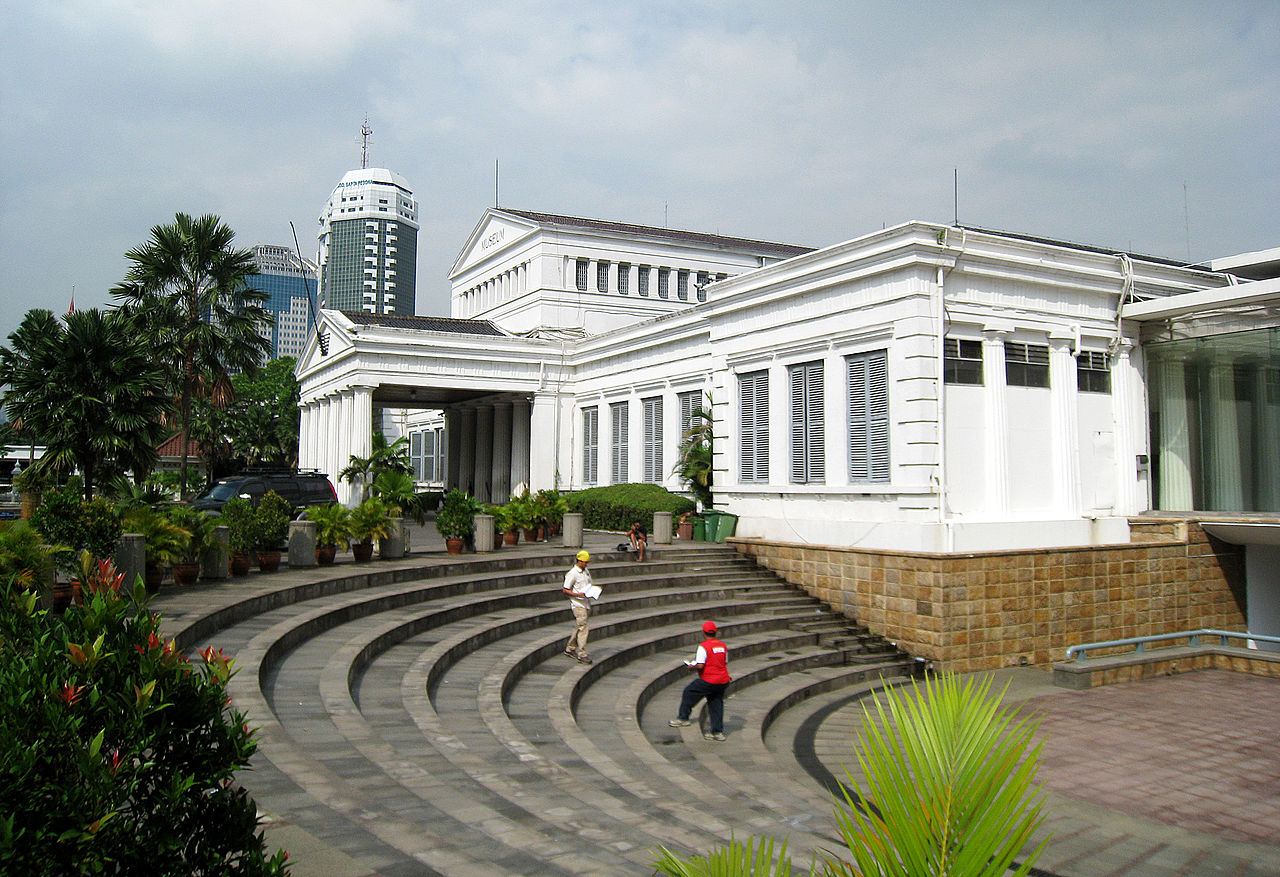The National Museum of Indonesia is an archeological, historical, ethnological, and geographical museum located in Jalan Medan Merdeka Barat, Central Jakarta, right on the west side of Merdeka Square. Popularly known as Elephant Building (Indonesian: Gedung Gajah) after the elephant statue in its forecourt. Its broad collections cover all of Indonesia's territory and almost all of its history. The museum has endeavoured to preserve Indonesia's heritage for two centuries.
On April 24, 1778, a group of Dutch intellectuals established a scientific institution under the name Bataviaasch Genootschap van Kunsten en Wetenschappen, (Royal Batavian Society of Arts and Sciences). This private body had the aim of promoting research in the field of arts and sciences, especially in history, archaeology, ethnography and physics, and publish the various findings.
One of the founders – JCM Radermacher – donated a building and a collection of cultural objects and books, which were of great value to start off a museum and library for the society. Due to the growing collections, General Sir Thomas Stamford Raffles built a new premises on Jalan Majapahit No. 3 at the beginning of the 19th century and named it the Literary Society. In the 1862 the Dutch East Indies government decided to build a new museum that would not only serve as an office but also could be used to house, preserve and display the collections.
The Museum was officially opened in 1868 and popularly known as Gedung Gajah (Elephant Building) or sometimes called Gedung Arca (The house of Statues). It was called Gedung Gajah on account of the bronze elephant statue in the front yard – a gift to Batavia from King Chulalongkorn of Siam in 1871. It was also called Gedung Arca because a great variety of statues from different periods are on display in the house.
In 1931, the museum's collections were shown in a world cultural exhibition in Paris. Unfortunately, a fire in the exhibition hall demolished the Dutch East Indies' exhibition pavilion and destroyed most of the objects. The museum received some insurance money as compensation and the following year these funds were used to build the old ceramics room, the bronze room, and both treasure rooms on the second floor.
On February 29, 1950 the institution became the Lembaga Kebudayaan Indonesia (Indonesian Culture Council). On September 17, 1962 it was handed over to the Indonesian government and became known as Museum Pusat (Central Museum). By decree of the Minister of Education and Culture No. 092/0/1979 May 28, 1979 it was renamed the Museum Nasional.
In 2007, a new building to the north side of existing building was opened, featuring many artifacts from prehistoric times to modern times. This new building, called Gedung Arca (Statue Building), provides a new exhibition wing. The old building is named as Gedung Gajah (Elephant Building).
In September 11, 2013, four precious golden artifacts from the 10th-century Eastern Medang kingdom period was stolen from the museum. The items were first discovered in the ruins of the Jalatunda ancient royal bathing place and in the temples on the slopes of Mount Penanggungan in Mojokerto Regency, East Java. The four missing artifacts were a dragon-shaped gold plaque, a scripted crescent-shaped gold plaque and one golden-silver Harihara plaque, as well as a small golden box. All the missing items were displayed together in a glass showcase located inside the archaeology gold artifact and treasure room on the second floor of the Gedung Gajah (old wing) building.












